European Food: Basic Overview
Common Ingredients
Common Cooking Methods
Courses
Meals
Key Taste
Eating Etiquette
Meal Presentation
Culinary Festivals
Influence and Fusion
Popular Types of European Food
-
Casseroles and bakes
European casseroles and bakes are hearty, oven-cooked meals that often combine proteins, vegetables, and starches, enveloped in rich sauces or topped with cheese.
The slow baking process allows for deep flavor development, making them perfect for family dinners or gatherings.
-
Stews
Stews in European cuisine are slow-cooked dishes that feature meat, vegetables, and sometimes legumes, simmered in a liquid base to achieve a thick, hearty consistency.
Stews often incorporate a variety of herbs and spices. They are typically served as warming, comforting meals during colder months.
-
Desserts
European desserts encompass a wide range of sweet treats, from simple fruit dishes to elaborate pastries and cakes.
These desserts often showcase dairy products like cream and cheese, as well as chocolate, fruits, and nuts.
-
Dumplings
Dumplings in European cuisine vary widely, from filled pockets to doughy balls, made with ingredients ranging from potatoes to flour-based doughs.
They can be served as part of a savory stew, in soup, or as a standalone dish with a variety of accompaniments.
European dumplings may be boiled, steamed, or fried, and are often seasoned or filled with meats, vegetables, or cheese.
-
Bread and doughs
Bread and doughs are fundamental to European cuisine, showcasing an extensive variety of styles, from crusty baguettes and hearty rye bread to soft brioche and flaky pastries.
These items serve as staple foods in European diets, complementing meals or being enjoyed on their own.
-
Fried dishes
Fried dishes in European cuisine are diverse, including everything from lightly battered vegetables and seafood to deeply fried meats and cheese.
These dishes are appreciated for their crispy textures and rich flavors, often served as appetizers, side dishes, or street food.
European fried dishes can range from simple, using minimal seasoning, to complex, incorporating a blend of herbs and spices for added depth of flavor.
-
Cakes and pastries
European cakes and pastries are renowned for their sophistication and variety, from airy sponge cakes and rich tortes to delicate pastries filled with cream or fruit.
Cakes and pastries are central to European dessert traditions, enjoyed at celebrations, as afternoon snacks, or as part of daily life.
European dishes are delicacies commonly savored across the diverse countries of Europe, each bringing its own unique flavors and traditions to the table.
Meat plays a central role in many European dishes, often served in generous portions, and dairy products like cheese and fermented milk items are staples in cooking. The continent is also known for its wide variety of breads, made from grains such as wheat, rye, barley, and oats.
Pasta, dumplings, and pastries are popular across the continent, while the potato has become a fundamental starch in the European diet since its introduction from the Americas.
European dining traditionally follows a course-based format, transitioning from the French “service à la française” to the “service à la russe,” where food is served in sequence from appetizers to desserts. This approach mirrors historical dining practices originating in royal and noble courts.
Cooking methods in Europe vary widely, from baking and boiling to frying and grilling, each adding a different dimension to the dishes. Salads, incorporating both raw and cooked vegetables, are an integral part of meals.
I dive into the heart of European culinary delights, uncovering the charm of traditional dishes, their global love affair, and the health secrets they hold. You’ll get a taste of the unique flavors of European regional cuisines, and learn about the best food destinations in Europe.
You can also uncover what sets European street food apart, including the top spots to savor it, how these dishes shine during special events, and the dos and don’ts of European dining manners.
Plus, I’ll shed light on how European fare stacks up against dishes from the Americas and Asian culinary offerings, and the art of pairing food and drinks.
54 Popular European Dishes with Filters
Explore a world of flavors with our curated list of the top 54 European dishes, listed by popularity. Discover your next culinary adventure by filtering through ingredients, flavors, cooking methods, dish types, and meal times.
From traditional recipes and national favorites to innovative fusions, street foods, and exotic delicacies, there’s something to delight every palate.
Pizza
- National
- Street Food
- Traditional
Pizza is a traditional Italian dish that consists of a round, flat base of leavened wheat-based dough topped with tomatoes, cheese (typically mozzarella), and often various other ingredients such as meats, vegetables, and condiments.
Traditionally baked in a wood-fired oven, pizza is celebrated for its versatility and variety, with famous variations including Neapolitan, Sicilian, and Chicago-style deep-dish pizzas.
Pizza is popular across the globe, transcending its Italian roots to become a beloved food in countries in Europe and North America, such as the United States, Canada, and Australia, among others.
It is commonly associated with casual dining and social gatherings, often enjoyed at parties, sports events, and family meals.
Spaghetti
- National
- Traditional
Spaghetti is a traditional Italian pasta, recognized for its long, thin, cylindrical shape. It is a staple of Italian cuisine, made from durum wheat semolina and water.
Variations like spaghettoni (thicker) and spaghettini (thinner) exist, with capellini (angel hair pasta) being one of the thinnest forms. Spaghetti dishes are popular worldwide, often served with tomato sauce, meat, or vegetables.
The pasta’s popularity in Italy surged in the 19th century with the advent of spaghetti factories, and it has since become a global staple, enjoyed in various forms across Europe, the Americas, and beyond.
Lasagna
- Traditional
Lasagna is a traditional Italian dish, known for its layers of flat, wide pasta alternating with fillings such as ragù (a meat sauce), béchamel sauce, and cheeses like ricotta, mozzarella, and Parmesan.
Originating from the region of Emilia-Romagna, lasagna has become a staple of national and international cuisine. Variations include lasagne al forno, which features a thicker ragù and béchamel sauce, and versions with vegetables or different types of meat.
It’s popular across Europe, especially in Italy, and has spread worldwide. Lasagna is often associated with festive occasions and family gatherings in various cultures.
Croissant
- Traditional
Croissant is a type of French pastry that is buttery, flaky, and known for its crescent shape. This traditional food item is considered a staple of French cuisine and is often associated with breakfast.
Croissants are made through a meticulous process called laminating, which involves layering dough with butter and folding it multiple times to create its distinctive layers.
Originating from the Austrian kipferl, the modern croissant was developed in France with the innovation of using yeast-leavened laminated dough.
Croissants have become popular across Europe and around the world, with variations such as Pain aux raisins, Pain au chocolat, and Pain aux fraises.
They are a common part of continental breakfasts in many European countries. They have also been adapted into fast food culture, notably with the introduction of factory-made, frozen doughs in the late 20th century.
Gelato
- Street Food
- Traditional
Gelato is an Italian frozen dessert that is recognized as a traditional food of Italy. It is known for its lower butterfat content compared to other styles of ice cream, typically containing 6–9% butterfat.
Gelato also has a higher density and richness due to its lower air content, around 35%, and more intense flavoring. This dessert is a staple of Italian cuisine and has spread in popularity across Europe and the rest of the world.
Gelato comes in various flavors, often inspired by fruits (like strawberry, lemon, or mango), nuts, and chocolate. Its artisanal preparation and serving method, often with a spade rather than a traditional ice cream scoop, distinguish it from other frozen desserts.
Fish and Chips
- Street Food
- Traditional
Fish and chips, also known as fish supper or fish ‘n’ chips, is a traditional British dish consisting of battered and fried fish accompanied by deep-fried chips.
Originating in England, this dish combines elements introduced by separate immigrant cultures and has become a symbol of British culinary culture, often regarded as Britain’s national dish.
Fish and chips gained popularity in the 19th century with the opening of the first fish and chip shops, and its consumption soared due to the rapid development of trawl fishing in the North Sea and the advent of railways connecting ports to major cities.
This allowed fresh fish to be rapidly transported to heavily populated areas. The dish is popular not only in the UK but also in other English-speaking and Commonwealth countries.
Traditionally, fish and chips were wrapped in newspaper, though more sanitary options have largely replaced this practice. Variations of the dish can include different types of fish, such as cod or haddock, and the addition of various condiments like tartar sauce or malt vinegar.
Pancakes
- Street Food
- Traditional
Pancakes, also known as hotcakes, griddle cakes, or flapjacks, are a type of flat, often thin, and round cake prepared from a starch-based batter that may contain eggs, milk, and butter. This flatbread is frequently topped with fruits like berries, bananas, and so on.
They are cooked on a hot surface such as a griddle or frying pan. In the United Kingdom, pancakes are often unleavened and resemble crêpes.
Famous variations include buttermilk pancakes, common in Scotland, Ireland, and the US, and buckwheat pancakes, which include blini and others.
Potato pancakes are another variation, recognized as the national dish in countries like Belarus, Ukraine, and Slovakia. Pancakes are enjoyed in various forms across Europe and beyond, including in Africa and Asia, with each region having its own unique take on the dish.
They are associated with Shrove Tuesday, known as “”Pancake Day,”” a celebration before the fasting period of Lent in Christian traditions.
Tiramisu
- Traditional
Tiramisu, a traditional Italian dessert, is a rich treat combining bold flavors of cocoa and espresso with creamy mascarpone cheese and wine, layered with ladyfinger biscuits.
Originating from the Veneto and Friuli-Venezia Giulia regions of Italy, tiramisu has become a staple of Italian cuisine. The name “tiramisu” translates to “pick me up” or “cheer me up,” reflecting the dessert’s uplifting effects.
Variations of tiramisu include using different types of alcohol or creating non-alcoholic versions. Popular across Europe and the world, tiramisu is often associated with celebrations and special occasions due to its luxurious ingredients and indulgent taste.
Paella
- National
- Traditional
Paella, originating from Valencia, Spain, is a renowned rice dish that symbolizes the essence of Spanish cuisine. This national dish, also called a paella, is traditionally cooked in a wide, shallow pan over an open fire.
The classic version, known as Paella Valenciana, includes round-grain rice, green beans, rabbit, chicken, and sometimes duck, cooked in olive oil and chicken broth, with saffron adding its characteristic yellow color.
There are numerous variations of paella, including Paella de Marisco (seafood paella) and Paella Mixta (mixed paella), which incorporate a mix of meat and seafood. Paella’s popularity extends beyond Spain, enjoying international acclaim and adaptation.
Goulash
- National
- Traditional
Goulash is a hearty soup or stew of meat and vegetables, seasoned with paprika and other spices, originating from Hungary where it is considered a national dish and a symbol of the country.
The dish dates back to the 9th century, initially prepared by Hungarian shepherds. Goulash has various famous variations across Central Europe, including the thicker stew versions like pörkölt and the creamy paprikás.
It is popular not only in Hungary but also throughout Central and Eastern Europe, and has even inspired dishes beyond Europe, such as the American goulash.
Goulash is traditionally made with beef, but can also be prepared with pork, veal, or lamb, and is often served with small egg noodles known as csipetke.
Quiche
- Traditional
Quiche is a savory French tart with a pastry crust filled with a custard of eggs and cream, often including cheese, meat, seafood, or vegetables. Quiche Lorraine, famous for its bacon lardons, is the most famous variant.
Dating possibly back to the 13th century, quiche has gained popularity across Europe and globally, with variations catering to local flavors. It is a versatile dish served hot, warm, or cold, fitting for various occasions from casual brunches to formal meals.
Moussaka
- National
- Traditional
Moussaka is a traditional dish that has its roots in the Eastern Mediterranean and the Balkans, particularly popular in Greece.
Moussaka features layers of eggplant or potatoes, minced meat (often lamb), and is famously topped with a creamy béchamel sauce before being baked. Moussaka has various regional variations, including a vegan version for Orthodox fast days and adaptations using other vegetables like zucchini or mushrooms.
It enjoys popularity not only in Greece but also in other countries across the Balkans, the Middle East, and beyond, adapting to local tastes and ingredients. Moussaka is often associated with family gatherings and festive occasions.
Fondue
- National
- Traditional
Fondue is a Swiss dish of melted cheese served in a communal pot, known as a caquelon, over a portable stove. It is enjoyed by dipping bread and sometimes vegetables into the cheese using long-stemmed forks.
Originating in Switzerland, fondue was promoted as a national dish in the 1930s to increase cheese consumption. The dish has since become a symbol of Swiss unity and is popular in various countries, especially in Europe and North America.
Fondue has expanded beyond cheese to include chocolate fondue, where pieces of fruit or pastry are dipped into melted chocolate, and fondue bourguignonne, where pieces of meat are cooked in hot oil or broth.
Wiener Schnitzel
- National
Wiener Schnitzel, sometimes spelled Wienerschnitzel, is a national Austrian dish consisting of a thin, breaded, pan-fried veal cutlet.
Variations of Wiener Schnitzel include using pork instead of veal to make it more affordable, known as Wiener Schnitzel vom Schwein or Schnitzel Wiener Art when made in the style of Wiener Schnitzel but with different meats.
The dish is traditionally served with a side of potato salad, cucumber salad, or parsley potatoes, and garnished with a slice of lemon and parsley.
This dish is a celebrated part of Viennese cuisine and has gained popularity across Europe and beyond, particularly in countries like Germany and Italy, as well as in other continents such as North America.
Currywurst
- Fusion
- National
- Street Food
Currywurst is a fast food dish of German origin, considered a street food staple within the country. It consists of steamed, then fried pork sausage, cut into slices and seasoned with curry ketchup, a sauce made from ketchup or tomato paste mixed with curry powder and other spices.
Variations include different types of sausage, such as beef for halal versions, and additions like paprika or chopped onions. The dish’s popularity has led to the consumption of approximately 800 million currywurst per year in Germany, with Berlin alone accounting for 70 million.
Currywurst has cultural significance, celebrated in songs, literature, and even a dedicated museum in Berlin, although it closed in 2018. It remains a symbol of German fast food culture, enjoyed by people of all ages across the country and beyond.
Gyros
- National
- Street Food
- Traditional
Gyros, sometimes known as gyro, is a traditional Greek dish consisting of meat cooked on a vertical rotisserie. In Greece, it is traditionally made with pork, though chicken, beef, or lamb may be used in other countries.
This dish is usually served wrapped or stuffed in pita bread with ingredients such as tomato, onion, fried potatoes, and tzatziki sauce.
Gyros is celebrated for its rich flavors and is a popular fast food not only in Greece but also in many parts of the world, including the United States, where it gained popularity in cities like Chicago and New York City in the 1970s.
This dish shares similarities with other global dishes such as the Arab shawarma and the Turkish doner kebab, highlighting its influence across various cuisines.
Sauerbraten
- National
- Traditional
Sauerbraten is a traditional German roast, considered a national dish of Germany, known for its heavy marination in a mixture of wine or vinegar, water, herbs, spices, and seasonings.
This dish is popular across Germany and in German-speaking regions, with variations found in regions such as Rhineland, Franconia, and Swabia. The meat used for Sauerbraten can vary, including beef (the most common), venison, lamb, mutton, pork, and even horse.
The marination process, which can last from three to ten days, tenderizes the meat and imparts a distinctive flavor. Sauerbraten is traditionally served with hearty accompaniments like potato dumplings (Kartoffelklöße), red cabbage, or Spätzle.
Ratatouille
- Traditional
Ratatouille is a traditional French vegetable stew that originates from Nice. Ratatouille is a celebrated dish in Provence and the Mediterranean coast.
A versatile dish, it can serve as either a main course or a side, featuring a variety of vegetables including eggplant, tomatoes, bell peppers, zucchini, onions, and garlic, all stewed in olive oil.
Ratatouille is popular not only in France but has gained international recognition for its healthy ingredients and flavorful taste. It’s often associated with the summer and harvest season when the vegetables used in the dish are at their peak freshness.
Coq au Vin
- Traditional
Coq au Vin, or “rooster with wine,” is a classic French dish where chicken is braised with wine, lardons, mushrooms, and sometimes garlic. It traditionally uses red Burgundy wine, but regional variations like coq au vin jaune, coq au riesling, and coq au Champagne exist.
Though first documented in the early 20th century, the dish, believed to have roots in ancient Gaul, likely existed as a rustic meal long before.
It became popular in the U.S. through Julia Child, becoming one of her signature dishes. Coq au Vin is celebrated worldwide, adapting to local tastes and wine varieties.
Beef Bourguignon
- Traditional
Beef bourguignon, also known as beef burgundy or bœuf à la Bourguignonne, is a traditional French stew made with beef braised in red wine, typically from Burgundy, and beef stock. It is flavored with carrots, onions, garlic, and garnished with pearl onions, mushrooms, and lardons.
This dish, originating from the Burgundy region of France, has become a standard of French cuisine, particularly in Parisian bistros. Despite its Burgundian roots, Beef Bourguignon is celebrated worldwide as a classic example of French culinary art.
Boiled potatoes, mashed potatoes, or pasta often accompany it. The dish’s rich, savory flavors have led it to be considered one of the most delicious beef dishes, a sentiment echoed by the authors of “Mastering the Art of French Cooking.”
Pot-au-Feu
- National
- Traditional
Pot-au-Feu, translating to “pot on the fire,” is a traditional French stew known for its slow-cooked blend of meat and vegetables, typically including beef, carrots, celery, leeks, onions, and turnips.
This dish is a quintessential example of French family cuisine, representing a meal in itself and celebrated across all social classes in France. Traditionally, Pot-au-Feu is enjoyed in two courses: the broth is served first, followed by the meat and vegetables.
It has numerous regional variations and can include different types of meat such as pork, ham, chicken, and sausage. The dish is not only a staple of French cuisine but has also inspired similar dishes in other cultures, such as the Vietnamese pho.
Souvlaki
- National
- Street Food
- Traditional
Souvlaki, known in some regions as kalamaki, is a Greek fast food that consists of small pieces of meat and sometimes vegetables grilled on a skewer. It is traditionally made with pork in Greece and Cyprus, but variations include chicken, beef, and lamb.
Souvlaki is a significant part of Greek cuisine and can be served wrapped in a pita with garnishes and sauces or on a plate with side dishes. The dish’s origins trace back to ancient Greece, indicating a long history of cooking meat on skewers.
Since the 1960s, Souvlaki has enjoyed widespread popularity in Greece, taking various forms across the country. In Athens, the term “kalamaki” refers to the skewered meat itself, while “souvlaki” can denote the dish served in a pita.
Pierogies
- National
- Street Food
- Traditional
Pierogi, also known as perogies in some regions, are filled dumplings of Central and Eastern European origin. This traditional food is made by wrapping unleavened dough around a savory or sweet filling and cooking them in boiling water.
Pierogi are a versatile dish that can be served as an appetizer, main course, or dessert, depending on the filling, which may include potato, cheese, sauerkraut, ground meat, mushrooms, or fruits.
Pierogi are often served with toppings like sour cream or fried onions. With historical roots tracing back to the introduction of dumplings in Europe from Asia, and it has evolved into various regional specialties, including bryndzové pirohy and pierogi ruskie.
They are popular in countries such as Poland, Ukraine, and Slovakia, and have been embraced by communities in North America.
Irish Stew
- National
- Traditional
Irish stew is a traditional dish native to Ireland, known for its hearty and comforting qualities. It is primarily made from lamb or mutton, potatoes, onions, and parsley, with carrots sometimes included in the mix.
As a national dish of Ireland, Irish Stew is celebrated for its simplicity and embodiment of Irish cuisine’s essence. Variations of the dish may include different types of meat, such as beef, but the classic version remains the most revered.
Irish stew is popular not only in Ireland but has also found a place in the hearts of people across the United Kingdom and among the Irish diaspora worldwide.
While not specifically associated with any festivals, it is a staple during the colder months and is often enjoyed on St. Patrick’s Day as part of the celebration.
Roast Beef
- Traditional
Roast Beef is a traditional British dish that consists of beef which is roasted in an oven. Known for its simplicity and rich flavor, it is often served as the main course of a meal, particularly on Sundays in the UK, making it a centerpiece of the traditional Sunday roast.
Accompaniments may include roasted potatoes, vegetables, Yorkshire pudding, and gravy made from the meat juices. Roast beef is celebrated for its variations, such as the rib roast or sirloin, which differ in cooking methods and cuts of meat.
While it is a quintessential British dish, its popularity extends to other European countries and beyond, often associated with festive occasions and family gatherings.
Yorkshire Pudding
- Traditional
Yorkshire Pudding is a traditional British dish made from a simple batter of eggs, flour, and milk or water, which is then baked in the oven. It is a versatile food that can be served in numerous ways, often accompanying meat and gravy as part of the traditional Sunday roast.
Originating from northern England, specifically Yorkshire, the dish was designed to make use of the fat that dripped from roasting meat. Yorkshire Pudding is known for its light, airy texture and is similar to Dutch baby pancakes and American popovers.
It has become a symbol of British cuisine and is celebrated in both the UK and the US with National Yorkshire Pudding Day. Variations of the dish include the addition of sausages to create “toad in the hole.”
Full Breakfast
- Traditional
Full breakfast is a substantial meal from Great Britain and Ireland, featuring bacon, sausages, eggs, black pudding, baked beans, tomatoes, mushrooms, toast, and fried bread, with coffee or tea.
It includes variations like hash browns and has regional versions: full English, Irish, Scottish, Welsh, and Ulster fry. Originating from simpler meals, it expanded during the Victorian era and is now offered as an all-day option in many eateries.
It is a staple of British and Irish cuisine, enjoyed in Commonwealth nations and recognized internationally alongside dishes like fish and chips and Sunday roast.
Waffles
- Street Food
- Traditional
Waffles are a dish made from leavened batter or dough, cooked between two plates that imprint a distinctive size, shape, and pattern.
Originating from Belgium and France, waffles are considered a traditional food in Western Europe, particularly famous in Belgium, which boasts over a dozen regional varieties such as the Liège waffle, Brussels waffle, Flemish waffle, Bergische waffle, and Stroopwafel.
Waffles enjoy popularity not just in Europe but around the world, with each region having its own preferred toppings and ways of serving, ranging from sweet to savory. Common toppings for waffles include berries, sliced bananas, or apple compote.
They are often associated with breakfast but can be enjoyed at any time of the day and are sometimes linked with celebrations and festivals, especially in countries where they are a part of traditional cuisine.
Poffertjes
- Street Food
- Traditional
Poffertjes, also known as “brothers,” are a traditional Dutch treat made from a batter that includes yeast and buckwheat flour. These small, fluffy pancakes are typically served warm or hot with powdered sugar and butter, and sometimes with syrup or advocaat.
They are prepared fresh for customers and sold in portions, often enjoyed with a variety of sweet garnishes such as syrup, whipped cream, or strawberries for added flavor.
Poffertjes have also found their way into Indonesian cuisine due to historical ties as a former Dutch colony and are a common sight at German Christmas markets.
Pastel de Nata
- National
- Street Food
- Traditional
Pastel de Nata, also known as Pastel de Belém, is a traditional Portuguese egg custard tart pastry. The tart is known for its creamy custard center and flaky pastry crust, often dusted with cinnamon.
This dessert is considered a national dish of Portugal. It has gained popularity worldwide, especially in Western Europe, Asia, and former Portuguese colonies like Brazil, Mozambique, Macau, Goa, and East Timor.
The pastry is particularly popular in regions with Portuguese influence, including Indonesia’s Kampung Tugu, Jakarta. It has been recognized as one of Portugal’s Seven Wonders of Gastronomy.
Originating from the Jerónimos Monastery in Lisbon before the 18th century, Pastel de Nata was created by Catholic monks. The recipe was later sold to a sugar refinery, which opened the Fábrica de Pastéis de Belém in 1837, where the original recipe is still used today.
Tarte Tatin
- Traditional
Tarte Tatin is a traditional French dessert, originating from the Centre-Val de Loire region. It is an upside-down tart made primarily with caramelized apples, though variations with other fruits or vegetables exist.
The Tatin sisters accidentally created the dish in the 1880s, and it has since become a beloved recipe in France and beyond, with variations including pear, banana, and even tomato Tarte Tatin.
It is popular in many countries, particularly in Europe, and is often associated with French cuisine and pastry.
Khachapuri
- National
- Street Food
- Traditional
Khachapuri is a traditional Georgian dish, recognized as the national food of Georgia. It consists of bread filled with a delicious blend of cheese, eggs, and other ingredients, served hot to preserve its unique taste.
Khachapuri is enjoyed in various shapes and forms, with some of the famous variations including Adjarian khachapuri, which is boat-shaped and topped with a raw egg and butter, and Imeretian khachapuri, which is circular and filled with cheese.
This dish is not only a staple in Georgian cuisine but also popular in post-Soviet states, Armenia, and increasingly in places like Israel and the United States. It is associated with National Khachapuri Day on February 27th, celebrating this iconic Georgian pastry.
Borscht
- National
- Traditional
Borscht is a traditional Ukrainian soup known for its characteristic deep red color, primarily due to its beetroot content.
Borscht is made from a combination of meat or bone stock, sautéed vegetables, and beet sour (fermented beet juice) or beetroots. The soup can be served hot or cold and is often garnished with sour cream, dill, or hard-boiled eggs.
While the most recognized version of borscht includes beetroot, there are numerous variations without it, such as green borscht made from sorrel, or white borscht based on rye.
It’s a symbol of Ukrainian cuisine but is also popular in Russian, Polish, and Jewish culinary traditions, among others.
Pelmeni
- National
- Traditional
Pelmeni are traditional Russian dumplings that consist of a thin, unleavened dough filled with minced meat, which can include pork, lamb, beef, or fish.
The dough is typically made from flour, water, and sometimes eggs, while the filling is seasoned with spices such as black pepper and onions, adding depth to the flavor..
Pelmeni can be served with a variety of toppings, including sour cream, mayonnaise, vinegar, or mustard. This dish is versatile and can be boiled, fried, or served in broth, making it a hearty meal for any occasion.
Pelmeni are related to other types of dumplings found across the world, such as varenyky in Ukraine and pierogi in Poland, but are distinguished by their specific preparation methods and traditional fillings.
They are particularly popular in Siberia, where they are often frozen outdoors in winter and used as preserved food, providing a vital source of nourishment in the harsh climate.
Shopska Salad
- National
- Traditional
Shopska Salad is a traditional Bulgarian dish, celebrated as the national salad of Bulgaria. It is a cold salad made primarily from diced tomatoes, cucumbers, onions, and peppers, generously topped with sirene cheese, a type of brine cheese.
The salad is dressed lightly with sunflower or olive oil and sometimes vinegar, enhancing its refreshing taste. The white cheese, green cucumbers, and red tomatoes represent the colors of the Bulgarian flag
It is popular across Southeastern Europe and is commonly served as an appetizer, often accompanied by rakia, a fruit brandy.
Haggis
- National
- Street Food
- Traditional
Haggis is a savory pudding and the national dish of Scotland, traditionally associated with Scottish cuisine. It consists of sheep’s pluck (heart, liver, and lungs), minced with onion, oatmeal, suet, spices, and salt, mixed with stock.
Traditionally, it is encased in the animal’s stomach, but now it is often found in an artificial casing. While variations exist, the traditional haggis served with “neeps and tatties” (turnips and potatoes) and a dram of Scotch whisky remains iconic.
Haggis is popular in Scotland and recognized globally, often associated with Scottish identity and celebrations.
Cabbage Rolls
- Traditional
Cabbage rolls, also known as sarma or golubtsy depending on the region, are a traditional dish found in the cuisines of Central, Northern, Eastern, and Southeastern Europe, as well as Western Asia and parts of North Africa.
This dish features cooked cabbage leaves wrapped around various fillings, such as beef, lamb, pork, rice, and vegetables. Cabbage rolls are typically baked, simmered, or steamed and often served with a sauce, which varies by cuisine.
For example, in Sweden and Finland, they are served with lingonberry jam, while in Central and Eastern Europe, tomato-based sauces and sour cream are common.
The dish is popular in countries like Romania, where it is considered a national dish known as sarmale, especially served during Christmas and New Year’s Eve, as well as at weddings and other celebrations.
Variations of cabbage rolls are also enjoyed in Turkey, Bulgaria, Greece, and among other countries, showcasing the dish’s wide appeal and adaptability to different regional tastes and ingredients.
Escargots
- Exotic
- Traditional
Escargots, also known as edible snails, are a traditional dish in various European cuisines, particularly French.
This delicacy is often served as an appetizer and is considered a hallmark of French cuisine, though its consumption dates back to ancient times across the Mediterranean, Africa, and parts of Asia.
Escargots are prepared by purging and then cooking the snails, usually with garlic butter, herbs, and wine. The dish is popular in countries like France, Spain, and Italy, where snail farming or heliciculture is a significant industry.
They are especially enjoyed during specific festivals and celebrations, such as the Feast of St. John in some cultures, symbolizing a connection to historical culinary practices.
Ravioli
- Traditional
Ravioli is a type of stuffed pasta that consists of filling encased in thin pasta dough, traditionally served in broth or with a sauce. This dish, with origins in central and northern Italy, has become emblematic of Italian cuisine.
Ravioli fillings vary by region, including cheese, meats, and vegetables, making the dish incredibly versatile.
It’s enjoyed across Europe and beyond, with variations like toasted ravioli from St. Louis, Missouri, and similar dishes in other cultures such as Turkish Mantı and Chinese jiaozi.
Arancini
- Street Food
- Traditional
Arancini, also called arancine, are traditional Sicilian deep-fried rice balls, often filled with ragù, mozzarella or caciocavallo cheese, and peas. Variants include fillings like ham, béchamel, mushrooms, pistachios, or aubergine.
Originating in 10th century Sicily during Arab rule, “arancini” translates to “little oranges,” reflecting their appearance.
They’re especially popular during the feast of Santa Lucia on December 13th in cities like Palermo, Siracusa, and Trapani, marking a historical event in 1646 when a grain shipment ended a famine.
A staple of Sicilian cuisine, arancini have gained international popularity, with notable types including arancini al ragù, arancini al burro (with béchamel), arancini ai funghi (with mushrooms), and arancini al pistacchio (with pistachios).
Bratwurst
- National
- Street Food
- Traditional
Bratwurst is a type of German sausage traditionally made from pork, although beef or veal can also be used. This national dish has a rich history dating back to at least the 14th century, with its origins in the Franconian city of Nuremberg, renowned for its grilling sausages.
Bratwurst varies significantly by region, with over 40 different varieties in Germany alone, including the Franconian Bratwurst, known for its marjoram seasoning and juiciness, and the Nürnberger Bratwurst, famous for its small size and protected geographical status.
Popular across German-speaking countries and at football games, it’s often enjoyed as a fast food item, served with mustard and bread. The Thüringer Rostbratwurst, another notable variation, is known for its spiciness and is traditionally grilled.
Pretzel
- Street Food
- Traditional
Pretzel, or Brezel in German, is a baked pastry that’s recognized for its unique knot shape. Originating from Europe, this traditional food has Christian roots and is believed to have been created by monks.
Pretzels can be either soft or hard and are commonly topped with salt, though other variations include sweet glazings and seeds. The pretzel has a significant cultural and religious history, often associated with Lent and Easter traditions.
It’s popular in Germany, Austria, Switzerland, and Alsace in France. Pretzels come in many local varieties, such as the Butterbrezel.
They are part of various traditions, including being given for good luck on New Year’s Day or as part of Palm Sunday celebrations in Catholic regions.
Köttbullar
- Traditional
Köttbullar, or Swedish meatballs, are a key part of Sweden’s national cuisine, made from a mix of ground beef and pork, breadcrumbs, onions, eggs, milk, seasoned with salt, pepper, and sometimes allspice or nutmeg.
Fried in butter, they’re served with gravy, boiled potatoes, lingonberry jam, and occasionally pickled cucumber. A staple in Swedish homes and restaurants globally, their variations depend on regional or personal tastes.
Gaining worldwide recognition, partly through IKEA’s cafeterias, they are a festive favorite in Sweden, especially at Christmas on the julbord, the traditional holiday buffet.
Smørrebrød
- Traditional
Smørrebrød, also known as smørbrød or smörgås in Norwegian and Swedish respectively, is a traditional open-faced sandwich originating from Denmark but also popular in Norway and Sweden.
This dish is a staple of Scandinavian cuisine and is made with a piece of buttered rye bread, known as rugbrød, which is a dense, dark brown bread. The bread is topped with various ingredients such as cold cuts, pieces of meat or fish, cheese, spreads, and garnishes.
Traditional toppings include pickled herring, cheese, cucumber, tomato, boiled eggs, pork liver paste, and smoked fish like salmon, among others. It is often garnished with mayonnaise-based sauces like remoulade or other thick sauces.
The dish changes with the seasons, and certain toppings are associated with specific festivals or celebrations, such as Easter or Christmas lunches in Denmark.
Beef Stroganoff
- National
- Traditional
Beef stroganoff, also known as beef stroganov, is a traditional Russian dish consisting of sautéed pieces of beef served in a sauce with mustard and smetana (sour cream).
Originating in mid-19th-century Russia, it has gained international popularity, leading to various adaptations from the original recipe. Common variations include chicken stroganoff, sausage stroganoff, mushroom stroganoff, and shrimp stroganoff.
The dish is named after the Stroganov family, a significant figure in Russian history. Beef Stroganoff is popular not only in Russia but also in countries across Europe, the United States, and even in Brazil, where variations with chicken or shrimp are common.
It is often served with rice or noodles and has become a comfort food in many cultures. In Sweden, a variant called korv Stroganoff uses local sausage, and in Finland, a version with diced pickles is common. The dish’s popularity extends to Japan, where it is typically served with rice.
Fasolada
- National
- Traditional
Fasolada, also known as fasoulada or fasoulia, is a traditional soup of Greek, Mediterranean, and Cypriot cuisine, often referred to as the national food of the Greeks.
This hearty dish is made from dry white beans, olive oil, and a variety of vegetables, including tomatoes, carrots, onion, parsley, celery, and sometimes meat like bastırma.
Variations of this dish can be found in other cultures under different names, such as the Italian fagiolata and the Portuguese feijoada, highlighting its widespread appeal across the Mediterranean and beyond.
Fasolada is particularly popular in Greece and Cyprus, where it is a staple of home cooking and is often consumed during the colder months for its warming and nourishing qualities.
Risotto
- Traditional
Risotto is a traditional Italian dish known for its creamy consistency, achieved by cooking high-starch rice with broth.
Originating from the Lombardy region, it’s a staple of Italian cuisine, often served as a primo (first course) but can also accompany dishes like ossobuco alla milanese as a main course.
The dish uses Arborio, Carnaroli, or Vialone Nano rice varieties, among others, which are key to its unique texture. Risotto is popular across Italy and has gained international fame, with variations such as Risotto alla Milanese, featuring saffron, and seafood risotto.
Strudel
- Traditional
Strudel is a traditional pastry of Austrian origin that has become popular across Central Europe and beyond. This layered pastry is known for its sweet fillings, such as apple, cherry, and cheese, but savory versions with spinach, cabbage, or meat are also common.
Strudel is considered a traditional food in Austria and parts of Germany, and it is recognized as a traditional agri-food product in South Tyrol, Italy.
Famous variations include the apple strudel and the cheese strudel (Topfenstrudel), among others. It is popular in countries that were part of the Austro-Hungarian Empire, including Italy, Hungary, and the Czech Republic, and has also found a place in Ashkenazi Jewish cuisine.
Strudel is sometimes associated with certain Jewish festivals, such as Simchat Torah and Purim, where it is enjoyed in celebration.
Bangers and Mash
- Traditional
Bangers and Mash, also known as sausages and mash, is a traditional British dish that consists of sausages served with mashed potatoes, often accompanied by onion gravy, fried onions, or peas.
This dish is a staple of British pub grub, known for its simplicity and comfort food status. It is made with various types of sausages, including pork, lamb, beef, or vegetarian alternatives.
Bangers and Mash is particularly popular in the United Kingdom and has been named Britain’s most popular comfort food in surveys.
The term “bangers” for sausages dates back to at least World War I, referring to the sausages’ tendency to burst when cooked with high water content. This dish embodies the essence of British cuisine and is enjoyed in homes and pubs across the country.
Ćevapi
- National
- Street Food
- Traditional
Ćevapi, also known as ćevapčići in its diminutive form, is a grilled dish of minced meat, considered a national dish of Bosnia and Herzegovina and Serbia.
Ćevapi is traditionally served in groups of five to ten pieces with flatbread (lepinja or somun), often accompanied by chopped onions, sour cream, or ajvar.
The dish has various regional variations, including Bosnian ćevapi, made from two types of minced beef, and Serbian ćevapčići, which may include beef, lamb, or pork.
This dish is a beloved part of the cuisine in the Balkans, with notable popularity in countries such as Albania, Bulgaria, Croatia, Kosovo, Montenegro, North Macedonia, and Slovenia.
Bigos
- National
- Traditional
Bigos, often referred to as hunter’s stew, is a traditional dish of Polish cuisine, also popular in other parts of the former Polish-Lithuanian Commonwealth.
This hearty stew is made from a mix of sauerkraut and fresh cabbage combined with various cuts of meat and sausages, often flavored with wine and a rich assortment of spices.
Bigos is a national dish that embodies the concept of using what’s available, leading to countless variations across regions, such as the addition of tomato paste in Greater Poland’s version or the use of red cabbage in Kuyavian bigos.
It’s a dish that’s particularly enjoyed during major Catholic holidays like Christmas and Easter, where its ability to be made in large quantities and improved with reheating makes it ideal for festive celebrations.
Cordon Bleu
- Traditional
Cordon bleu is a Swiss dish that consists of meat wrapped around cheese, then breaded and pan-fried or deep-fried. Traditionally made with veal or chicken breast, the meat encases a slice of ham and cheese, offering a delicious blend of flavors and textures.
This dish, whose name translates to “blue ribbon” in French, symbolizes culinary excellence and has various adaptations, including pork and ham versions.
Cordon Bleu has gained international fame, with variations enjoyed in many European countries and beyond, adapting to local tastes and available ingredients.
Trifle
- Traditional
Trifle is an English layered dessert consisting of sponge fingers or sponge cake soaked in sherry or another fortified wine, layered with fruit, custard, and whipped cream.
This dessert is highly adaptable, with variations including chocolate, coffee, or vanilla, and sometimes the fruit and sponge layers are set in fruit-flavored jelly.
Trifle’s evolution can be traced back to the 16th century, initially resembling a fruit fool, and has since become a recognizably modern dessert by the 18th century, particularly with the inclusion of gelatin jelly.
The dish is celebrated for its versatility and has been a staple in English cuisine for centuries, often appearing in cookbooks and culinary traditions.
Trifle also gained popularity in various forms across the world, adapting to local tastes and ingredients. It has been part of significant celebrations, such as the Platinum Jubilee of Queen Elizabeth II.
Rösti
- National
- Street Food
- Traditional
Rösti is a Swiss dish primarily made from potatoes, sautéed or shallow-fried in a pan. Originally a breakfast dish for farmers in the canton of Bern, it has become a national dish enjoyed all over Switzerland and internationally.
Rösti is traditionally served as a side dish rather than a main meal, often accompanying dishes like spinach and fried eggs or Fleischkäse.
The basic version consists of coarsely grated potato, but variations may include bacon, onion, cheese, apple, or fresh herbs, reflecting regional preferences.
Rösti is emblematic of Swiss-German culture, contrasting with the Latin culture of French-speaking Switzerland. The term “Röstigraben” (rösti ditch) humorously denotes the cultural divide between the German and French-speaking parts of the country.
List of European Dishes by Country
What Are the Characteristics of European Dishes by Region?
Here’s a summary of the characteristics of European dishes by region.
The characteristics of European dishes by region reflect a diverse culinary landscape, where each area’s unique climate, culture, and history contribute to distinct flavors and traditions that continue to evolve over time.
How Does European Cuisine Evolve Over Time?
European cuisine’s evolution is marked by distinct phases, influenced by social structures, global explorations, and cultural exchanges:
| Phases | Features |
|---|---|
| Medieval Times | Diet Based on Social Class: The majority of the population, irrespective of status, consumed cereal grains. Bread was a universal staple, with the working class using it as a daily meal and the nobility enjoying finer varieties. Noble Privileges: The aristocracy had exclusive rights to hunt, providing them access to a variety of meats. Their diets were rich in spices, a symbol of wealth due to the high cost of these imported goods. Spices like cinnamon, nutmeg, and saffron were common. Commoners’ Diet: Largely plant-based, with rye or barley bread, homegrown vegetables, and dairy products from their own livestock. Meat was less common and usually came from domestic animals. Pottage, a hearty stew, was a staple. |
| Early Modern Era | Introduction of New Ingredients: The Columbian Exchange introduced new foods from the Americas, such as potatoes, tomatoes, and chocolate, enriching the European palate. Rise of Restaurants: The modern restaurant concept emerged in Paris in the 1780s, with the French Revolution accelerating its spread across Europe, transforming dining culture and making fine dining more accessible. |
Next, why don’t you find out which countries boast the best food across the continent.
Which European Countries Have The Best Food?
Below are the 6 most famous countries in Europe known for their food:
Among these discussions, certain European countries consistently stand out for their culinary excellence
What Are the Best Food Cities in Europe?
Here are some European cities often lauded for their gastronomy:
Europe boasts a diverse array of food cities, each offering a unique culinary experience that seamlessly blends traditional flavors with innovative dining. Street food is one of the most attractive features of these cities.
What Is Special About European Street Food?
European street food is diverse, reflecting the continent’s rich tapestry of cultures, culinary traditions, and historical influences. Here’s a summary of the characteristics and variety you can find across different countries:
European street food stands out for its rich history and variety, serving as a bridge to the continent’s most famous street food destinations.
Which European Countries Are Most Famous for Street Food?
The European countries most famous for their street food include:
Countries like Italy, Spain, and Greece are renowned for their vibrant street food scenes, reflecting the cultural significance of food in European celebrations.
What Are the Roles of European Dishes for Special Occasions?
European dishes play significant roles in special occasions across the continent, reflecting the rich culinary traditions and cultural significance of food in celebrations. These roles can be categorized based on the type of occasion, as described below:
Dinner Parties and Gatherings: European cuisines offer a variety of dishes suitable for hosting, from Spanish tapas to French hors d’oeuvres, reflecting the social aspect of food in bringing people together.
European dishes play a pivotal role in special occasions, highlighting the connection between traditional celebrations and the continent’s dining etiquette.
What Is European Dining Etiquette?
European dining etiquette varies by country but shares some common principles across the continent. Here’s a summary of key aspects to keep in mind:
European dining etiquette emphasizes a blend of tradition and formality, underscoring the contrast between traditional European dishes and their modern interpretations.
How Do Traditional European Dishes Compare to Modern Counterparts?
Traditional European dishes and their modern counterparts exhibit a fascinating evolution in culinary practices, reflecting changes in lifestyle, technology, and globalization. Below is an in-depth guide:
Traditional European Dishes
Modern European Dishes
To move on, uncover the comparison between European and American dishes.
European Vs. Dishes of the Americas: What Are the Differences?
Here’s a summary for the key differences between dishes from Europe and the Americas:
European Dishes
American Dishes
This table highlights the broad contrasts between European dishes and delicacies from the Americas, from their cultural influences to dining practices and culinary approaches.
Right below is a quick comparison between European and Asian fare.
In What Ways Do European And Asian Dishes Differ?
Below is a concise comparison to illustrate the differences between European and Asian dishes:
European Dishes
Asian Dishes
European and Asian culinary creations differ significantly in their use of ingredients, cooking techniques, and flavor profiles, leading to a rich diversity of cuisines that are complemented by specific beverages in European traditions to enhance the dining experience.
Which Beverages Complement European Dishes?
Here are some general recommendations for pairing beverages with various European cuisines:
The key is to consider the primary flavors and cooking methods of the dish and choose wonderful European drinks that either complement or contrast those elements effectively.
That is a European adventure too good to miss, and I encourage you to embark on it! Do you have a favorite dish or recipe? Don’t hold back; add your comments below! If you find this article useful, share it and hit that like button.


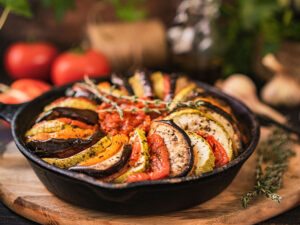

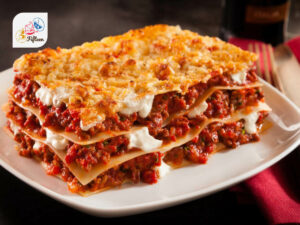
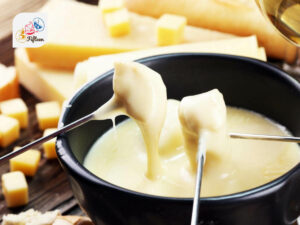
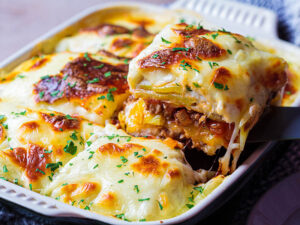
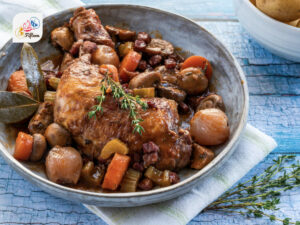
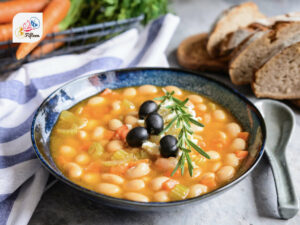
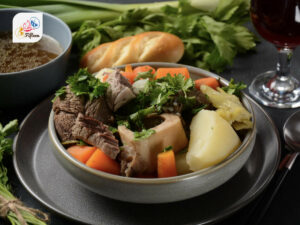
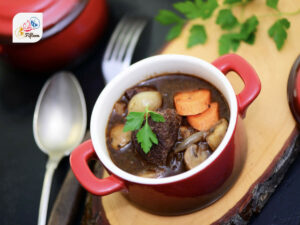
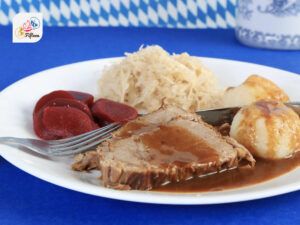
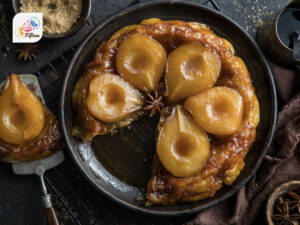



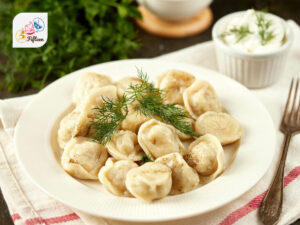
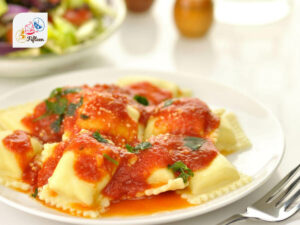

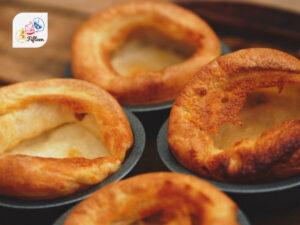

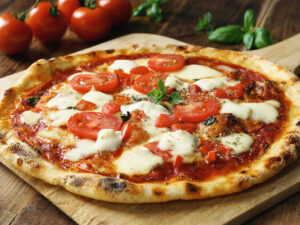
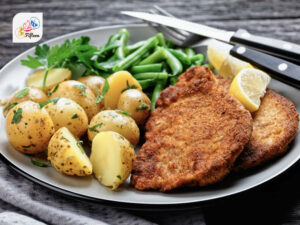
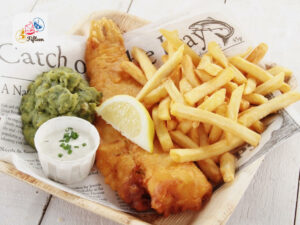



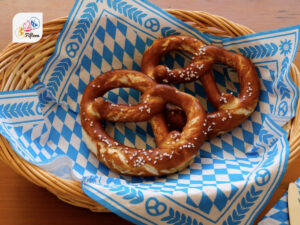

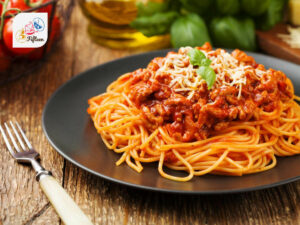
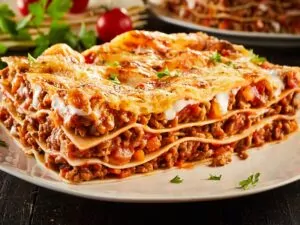



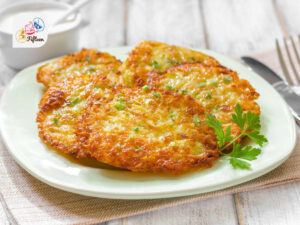

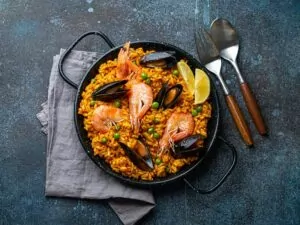
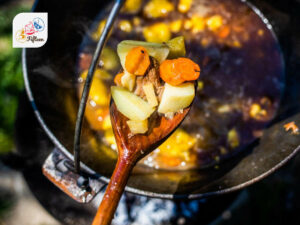
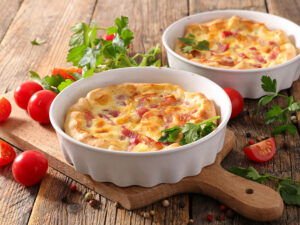
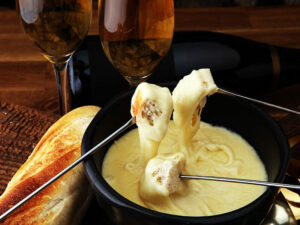



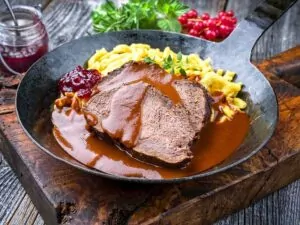
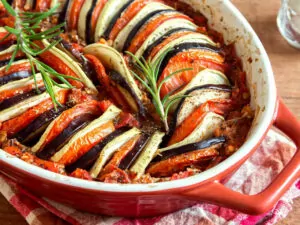
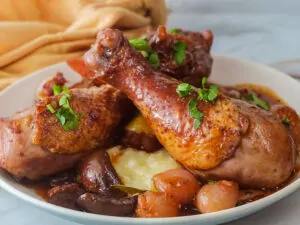
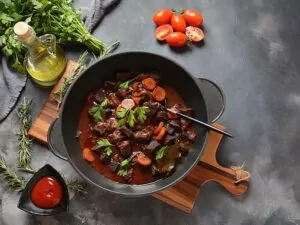
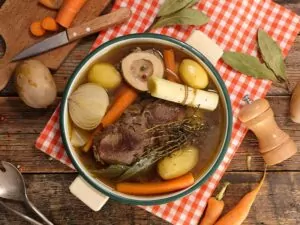

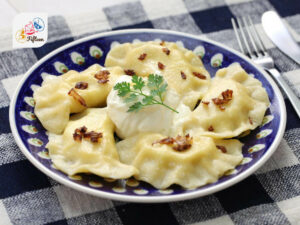
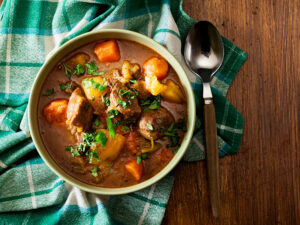
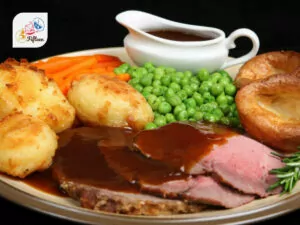







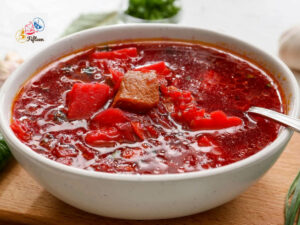
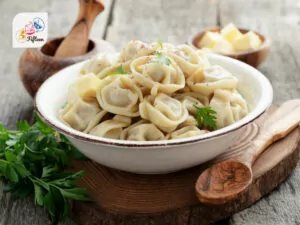
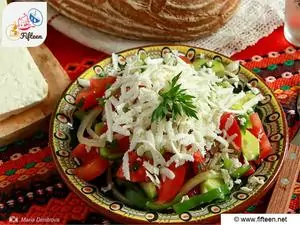
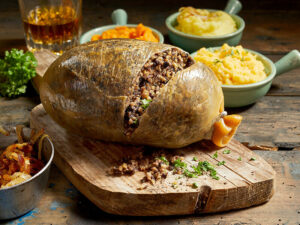
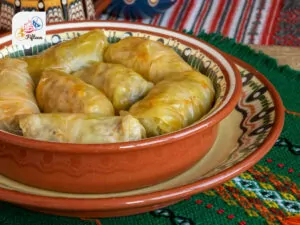
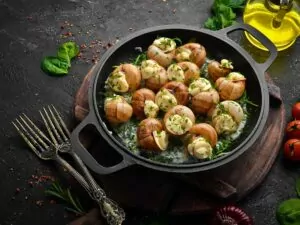
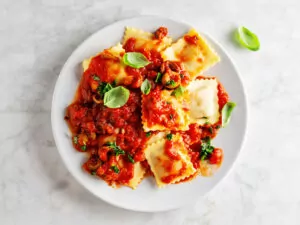



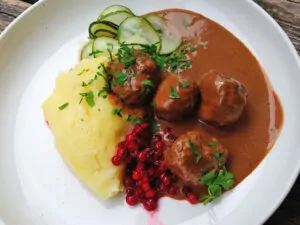
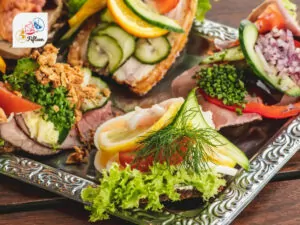
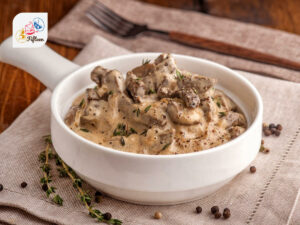
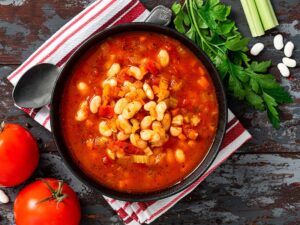
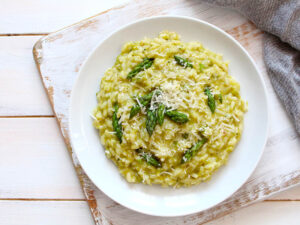
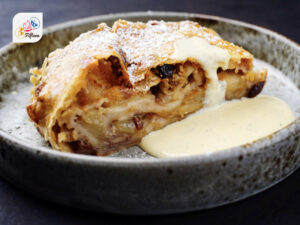
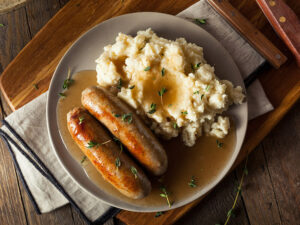
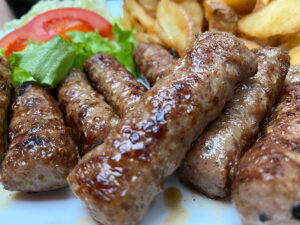
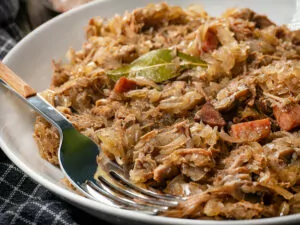


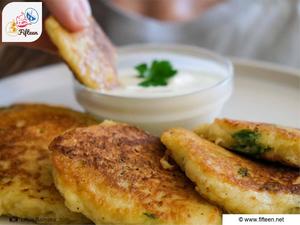
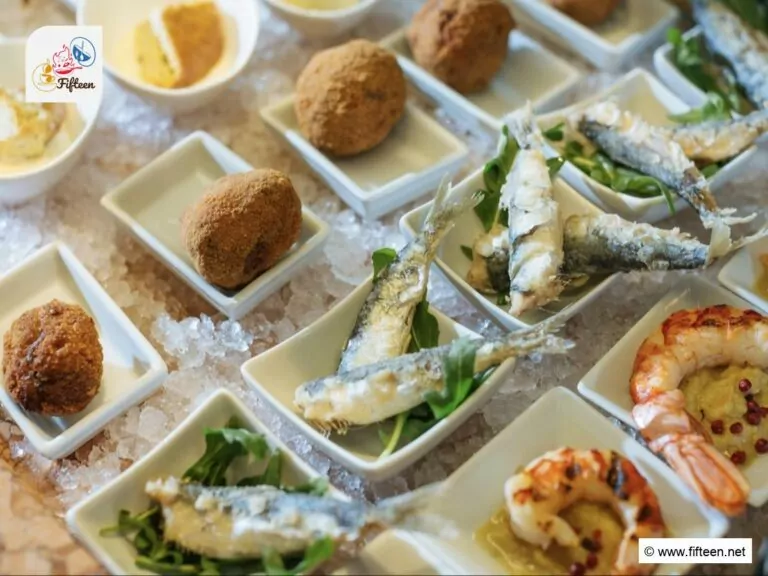

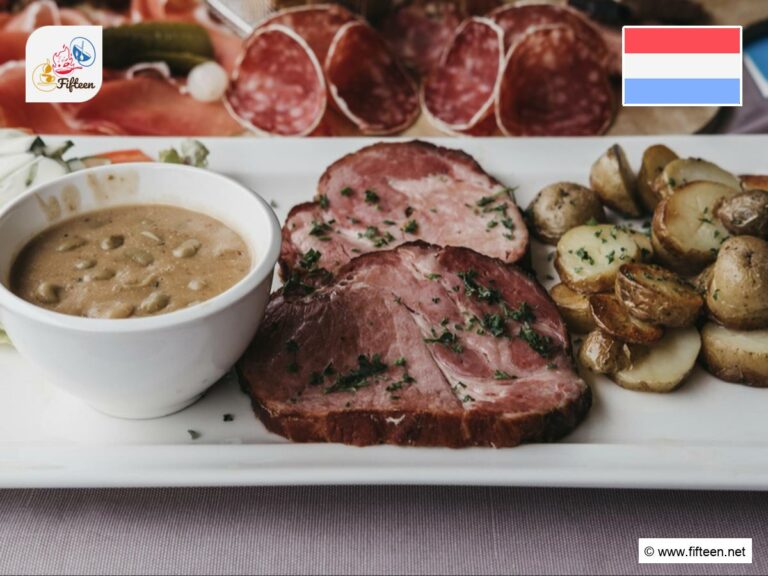
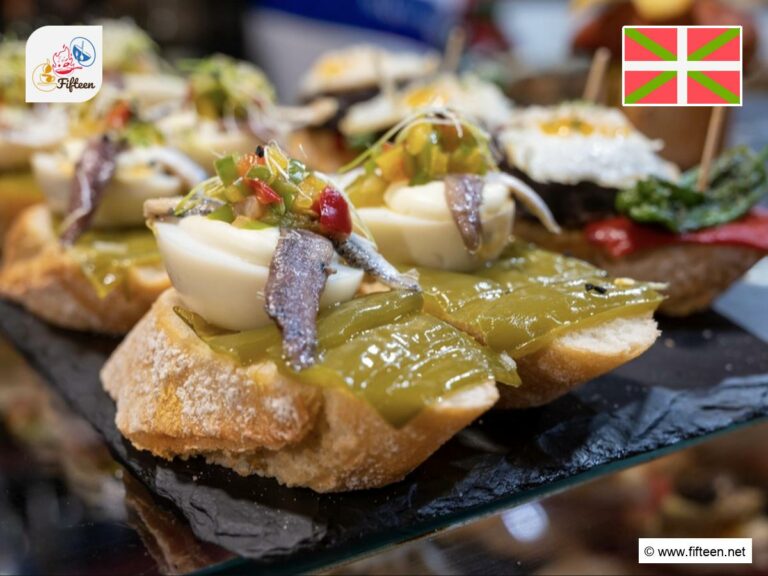
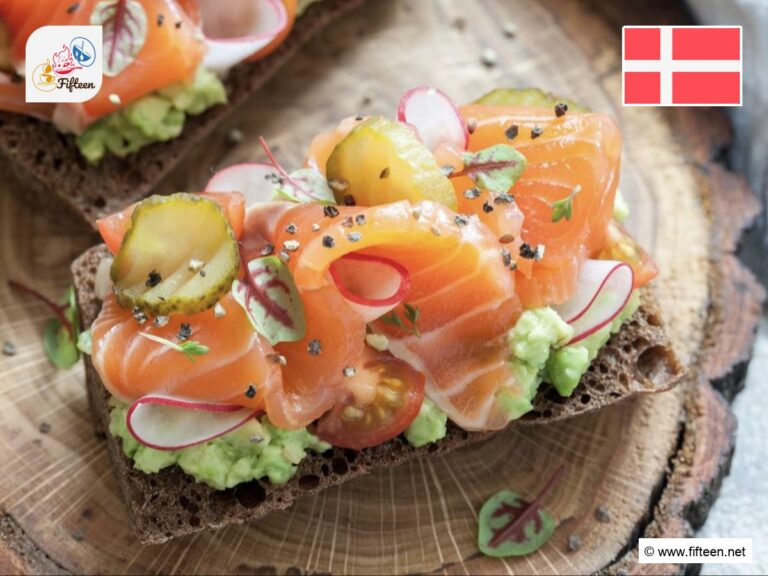
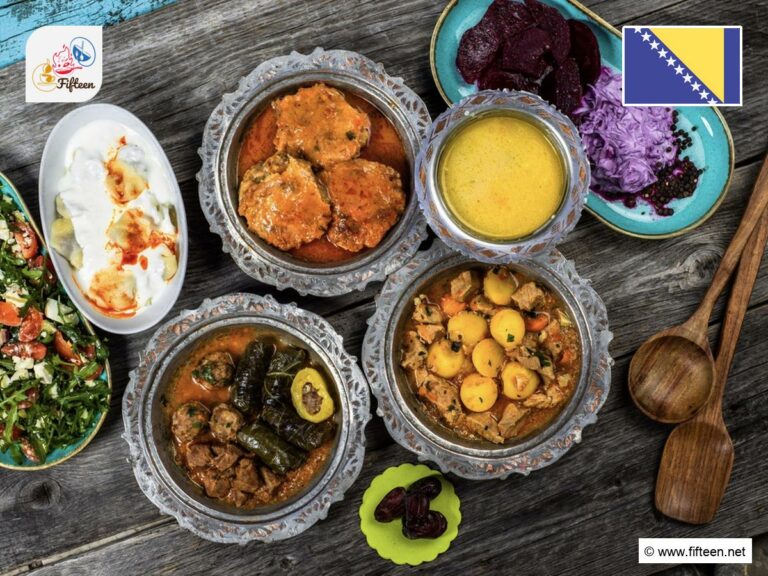
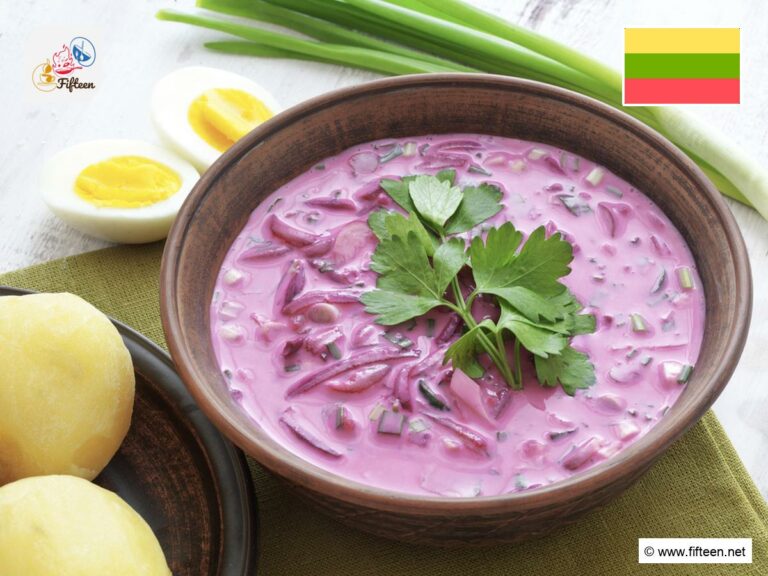
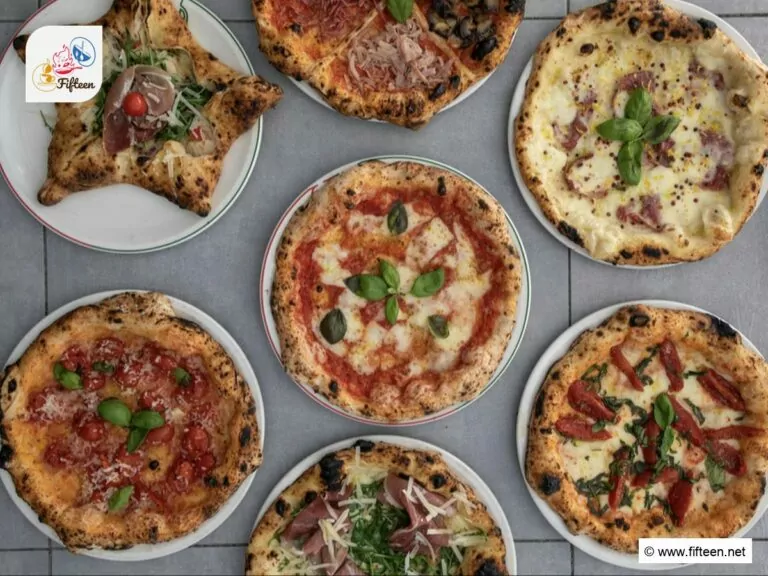
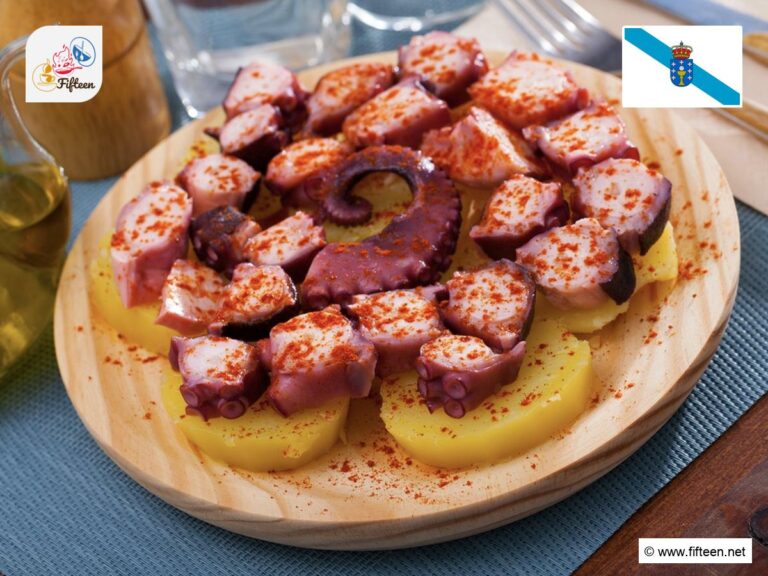
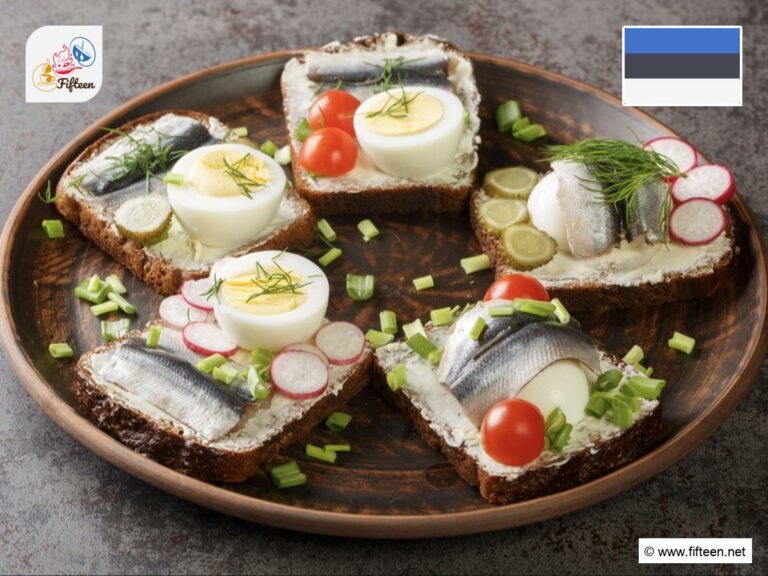
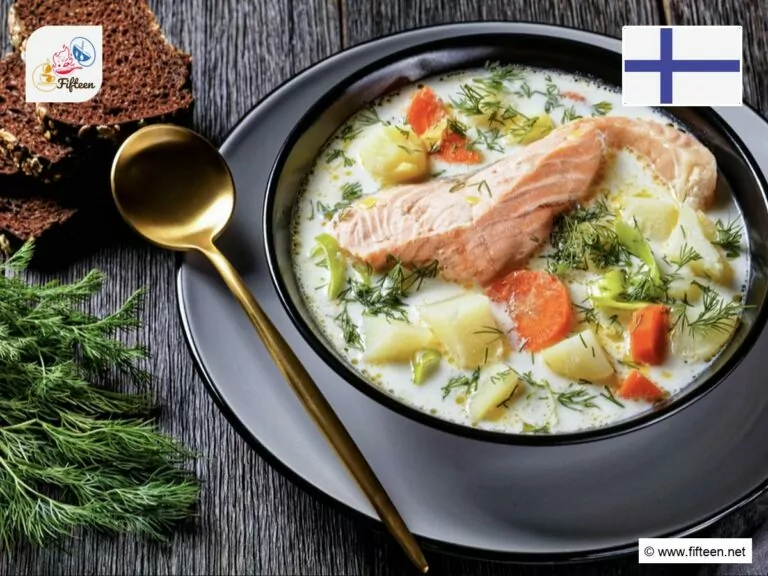
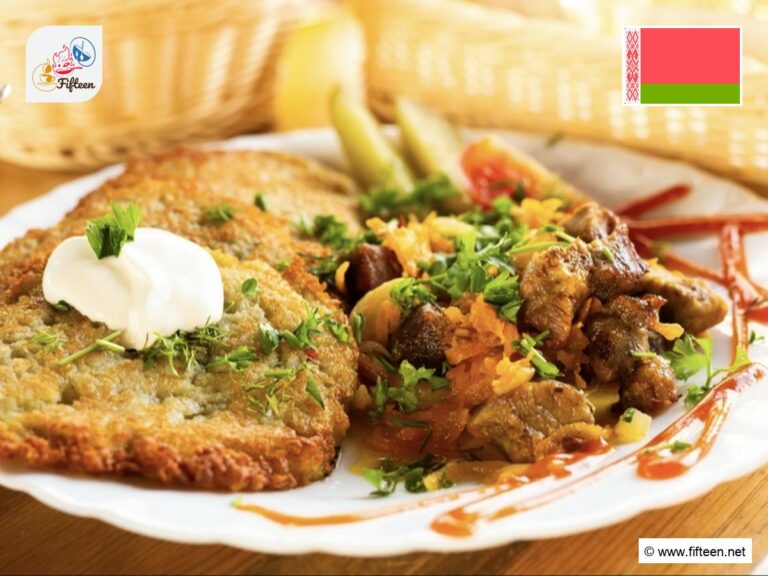

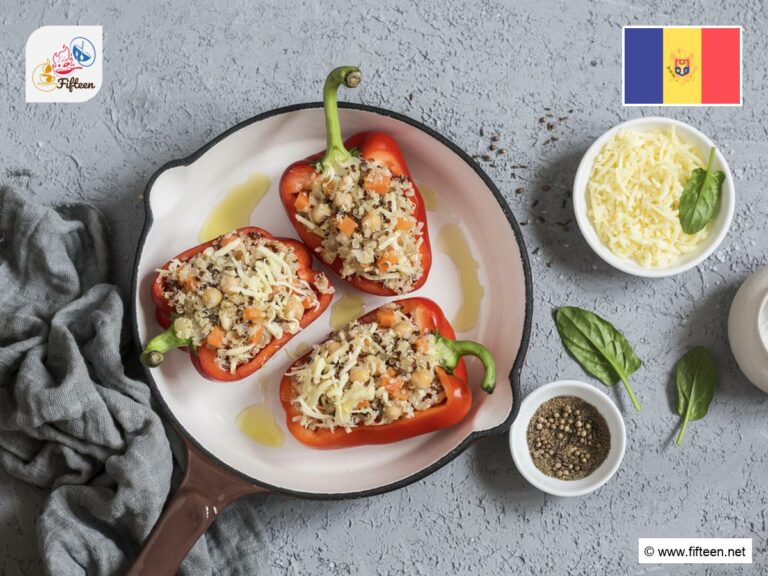
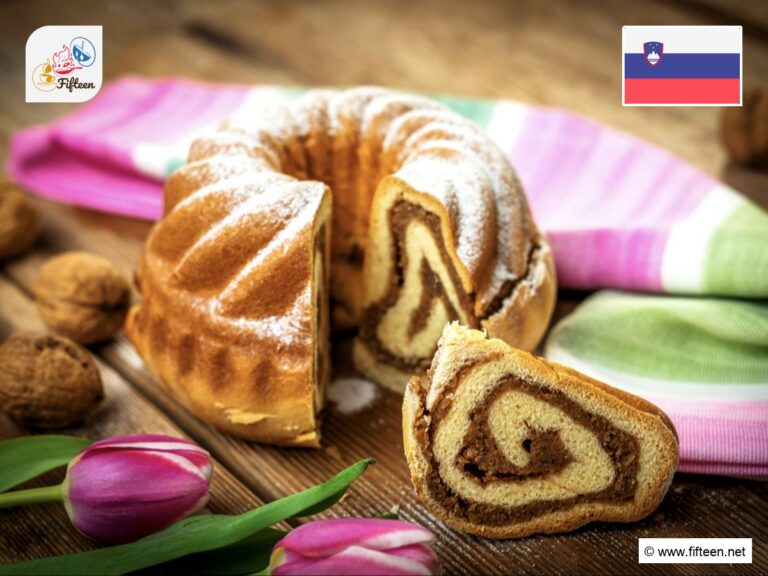
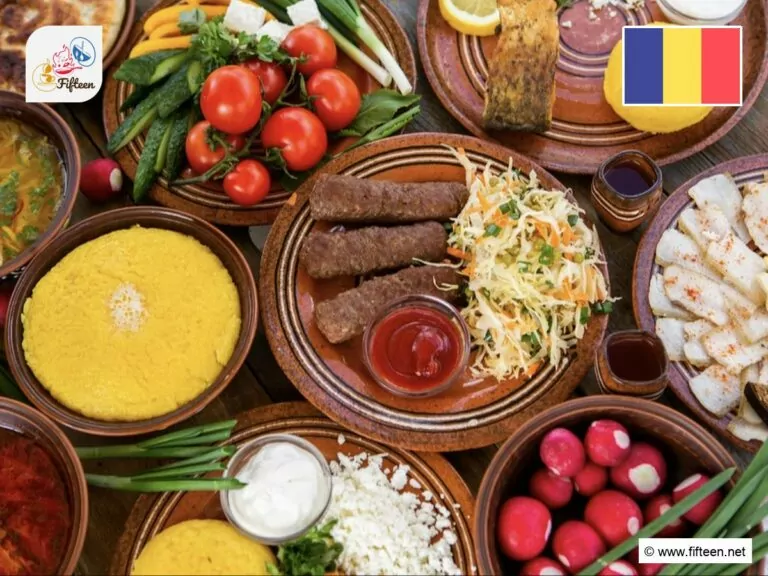
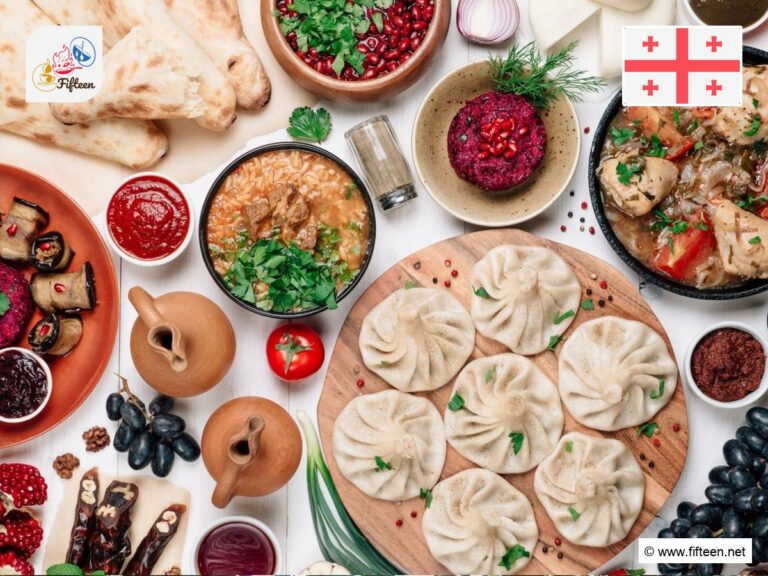
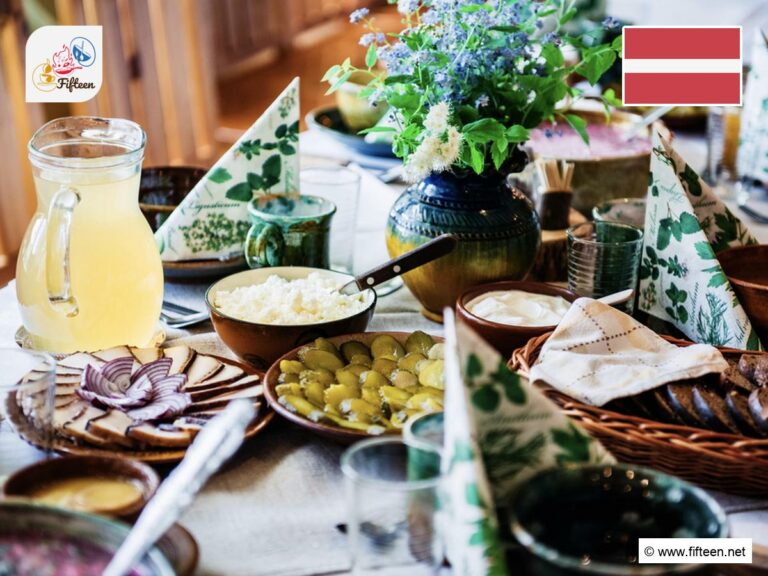
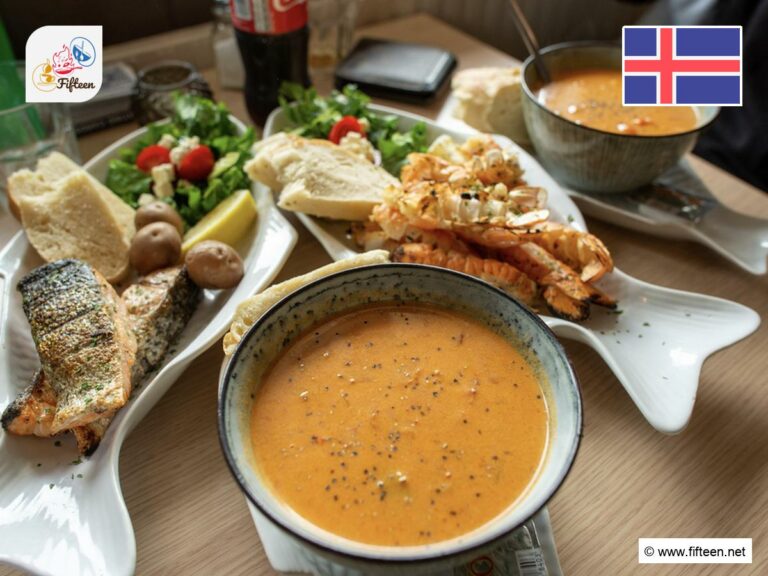
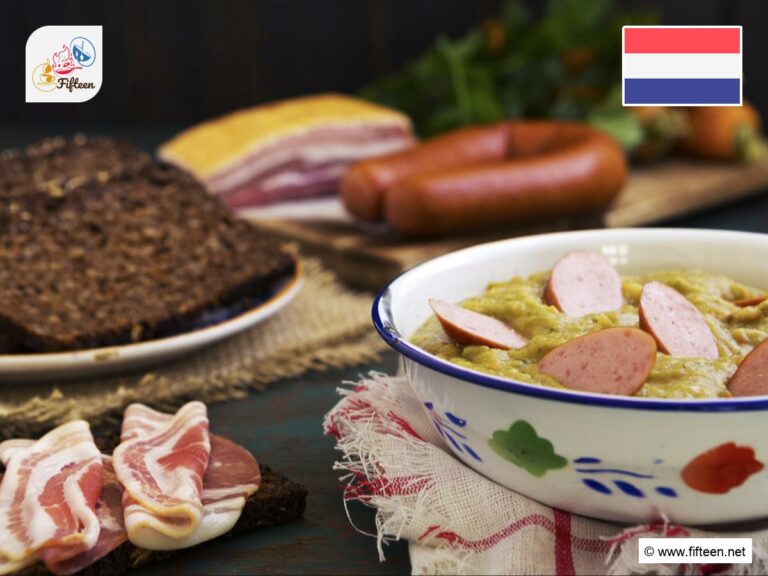
Jamie Scott
Editor in Chief, Senior Content Writer
Expertise
Home Cooking, Meal Planning, Recipe Development, Baking and Pastry, Food Editor, Cooking-video Maker, Western Food Evaluation Expert
Education
Le Cordon Bleu College of Culinary Arts
Local Community College, New York, NY
Jamie Scott is a skilled culinary expert and content creator specializing in Western cuisine. With over 15 years in the culinary field and formal training from Le Cordon Bleu, Paris, Jamie deeply understands how to blend nutrition with delicious flavors. His passion for cooking matches his commitment to making healthy eating accessible and enjoyable.
On Fifteen.net, Jamie brings a fresh perspective to classic dishes and beverages, offering readers insightful recipes, cooking tips, and a fresh view on meal planning that emphasizes taste, health, and simplicity.